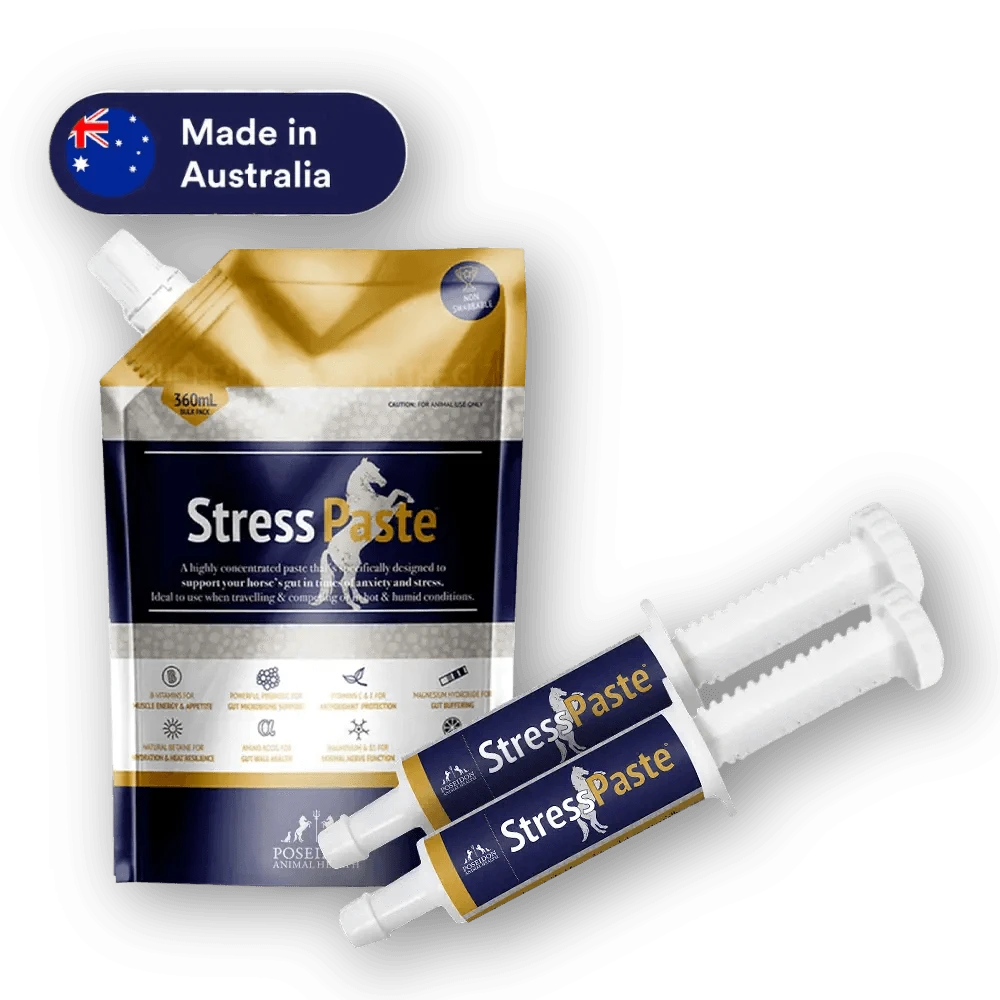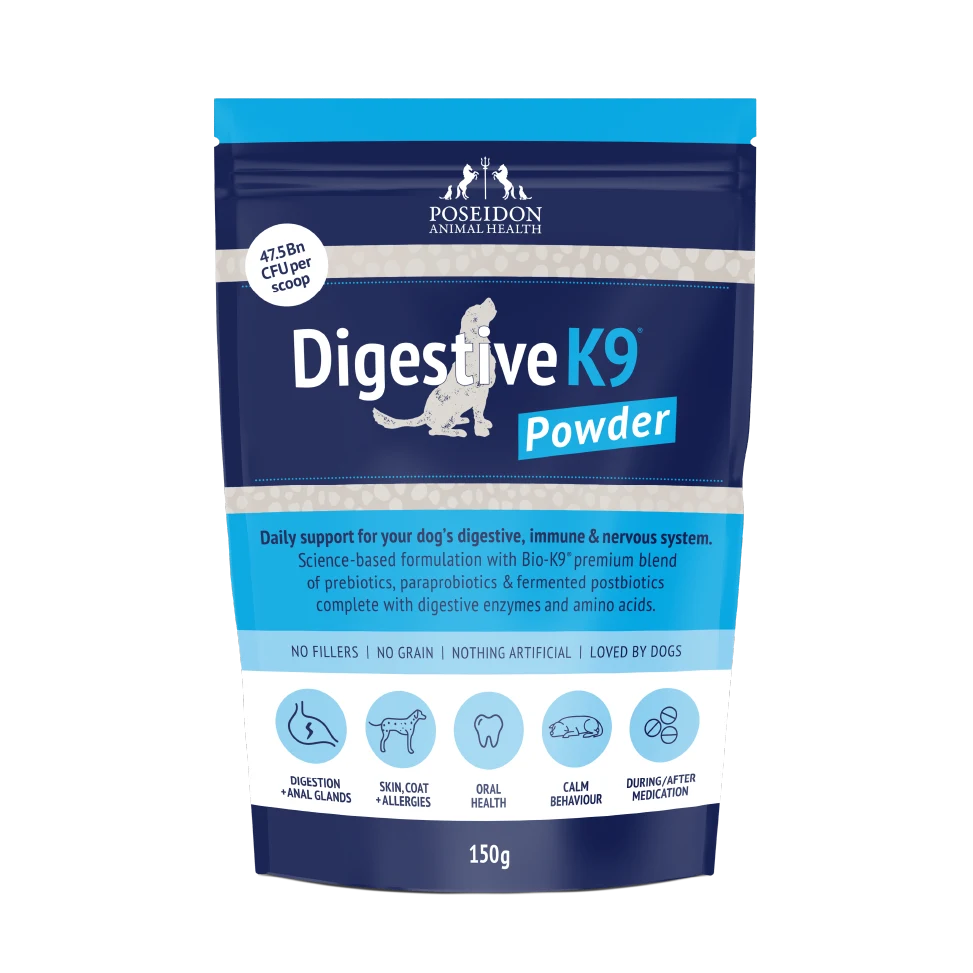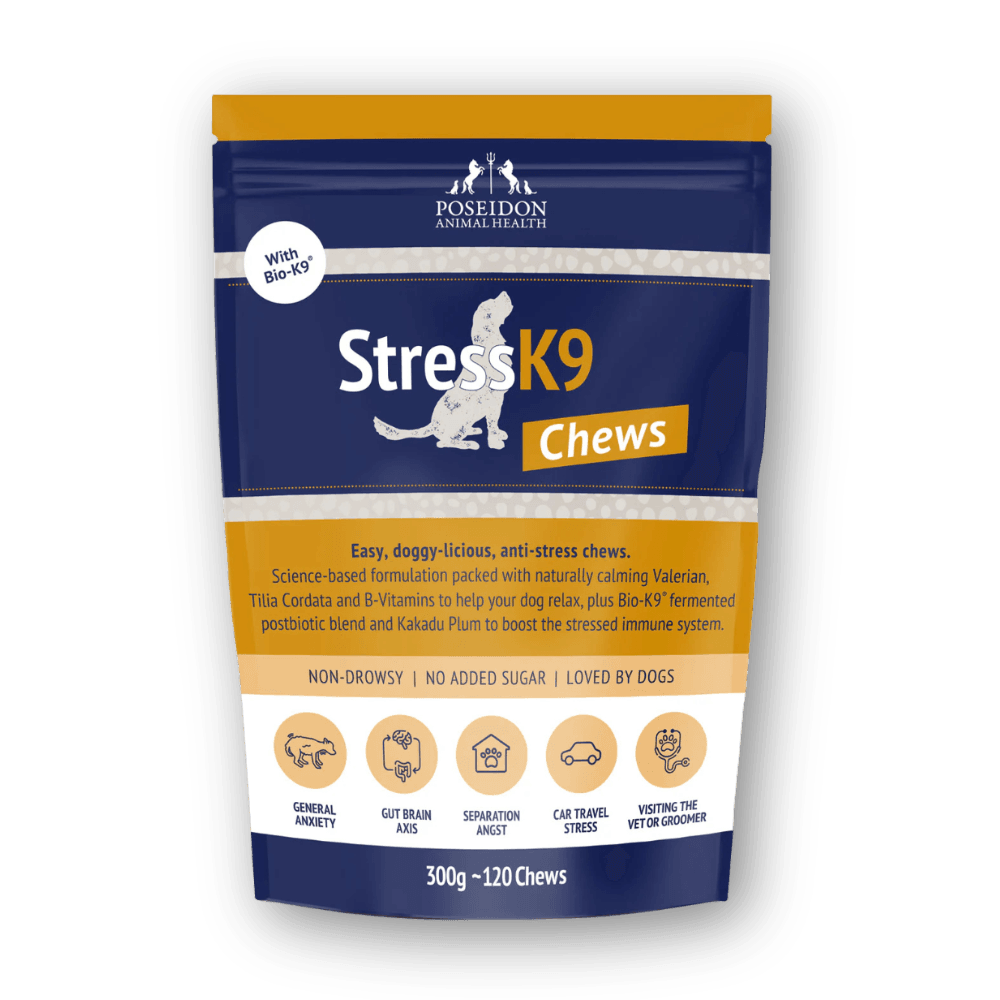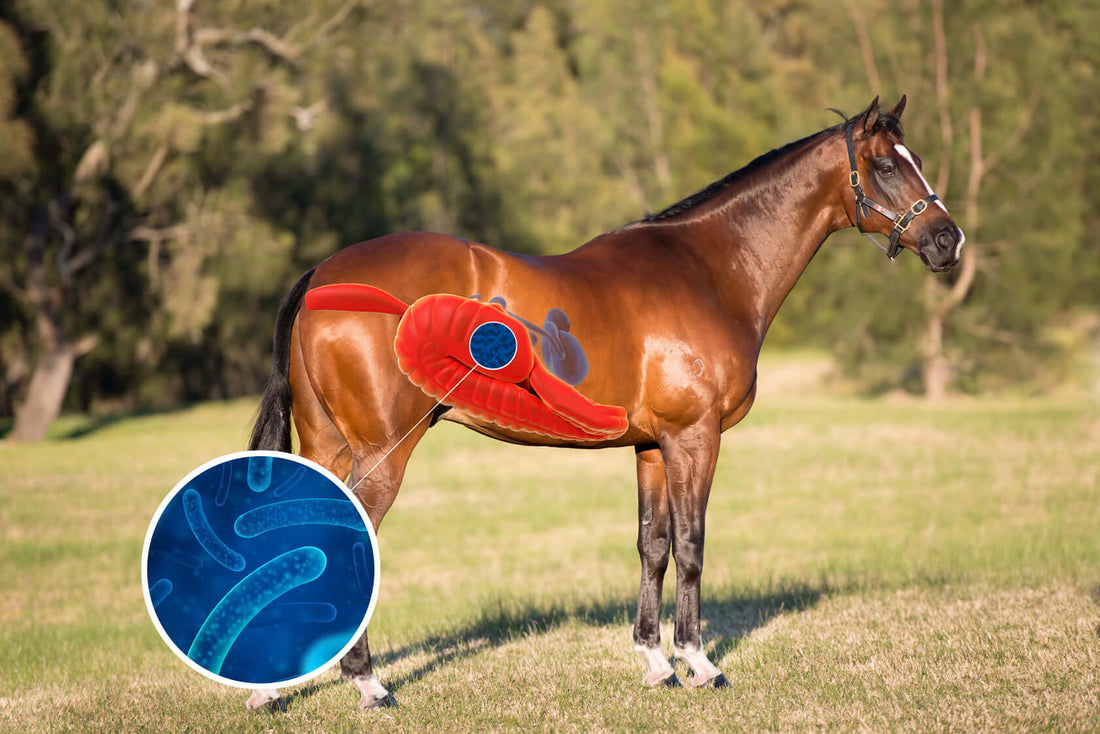
By Nerida McGilchrist, B Rur. Sc (Hon1) PhD RAnNutr
As we learn more about the importance of human gut health and the role it plays in our overall health and well-being, we are now slowly turning our efforts to understanding the impact gut health has on our horses too. However, unlike humans, horses have a highly specialise caecum and large colon, collectively known as the hindgut, and it plays the greatest role in horse health. How and why we feed our horses has a great deal to do with the hindgut health and heres’ why.
Horses themselves don’t have the ability to digest fibre from forage sources like pasture and hay within their diet. This is because they lack the enzymes necessary to breakdown fibre. However, the hindgut, the site of fibre digestion, houses millions if not billions of microbes (mainly bacteria and fungi) which do have the enzymes necessary to breakdown fibre. So, while the horse provides somewhere warm and moist to live with an endless source of fibrous food, the by-product of this digestion, volatile fatty acids (VFA’s) is absorbed and utilised by the horse as a major energy source. These fibre digesting microbes also produce B-group vitamins like thiamine and biotin, as well as vitamin K.
They also keep pathogens under control and stop them taking over and dominating.
Research is also suggesting that the gut and microbiome may actually be involved with many clinical diseases in the horse and even impact the joint, soundness, and allergies. (Tom Schell, D.V.M., CVCH, CVH)
The balance of the bacteria can also impact on behaviour and appetite. When the hindgut becomes stressed and more acidic, there is compromised vitamin B production which can reduce appetite and increase anxious behaviour.
We used to think bacteria was only linked to disease or illness.
Think again.
As research increases in this area of horse health, we may begin to understand the significant role these little critters play.
We are slowly learning more and more about the need to keep the balance of good and bad bacteria in favour of the good guys.
When diet (high starch/sugars), medications, stress, travel, competition, illness etc potentially change the bacterial balance, then we can get a different set of outcomes.
Other less helpful bacterial strains can become more dominant, restricting the more helpful strains, creating potentially harmful by-products (e.g. lactic acid) that impact health and even impact digestion and/or nutrient uptake. This can lead to:
- Damage to the gut lining (leaky gut)
- Laminitis
- Colic
- Nervous behaviours
- Less appetite
- Poor weight maintenance
- Dull coat
- Reduced movement
- Loose manure
Our horses contain ten times more bacteria than living cells.
Meet The Bacteria
There are two major families of bacteria that live in a horse’s hindgut. These are:
-
Team Fibre Fermenters
These little guys are a diverse group of bacteria who love to ferment fibre. They devote themselves to the time-consuming, slow process of breaking fibre down via fermentation and turning it into volatile fatty acids (VFAs) that the horse can then absorb and use as a source of calories. They are sleepy little critters and only produce VFAs at the same rate as the horse can absorb them. So acids never build up in the hindgut and the hindgut pH remains neutral (close to 7). These bacteria are the ones we call the good bacteria!
-
Team Starch and Sugar Fermenters
These bacteria LOVE to ferment starch and sugars and can do so extremely rapidly. Compared to the sloth like fibre fermenting bacteria these critters do everything fast, including fermenting starch and sugars to VFAs and lactic acid. So fast in fact that the VFAs and lactic acid accumulate in the hindgut and cause the hindgut contents to become acidic. Too many of these bacteria and they start to become the bad bacteria.
Benefits of the GOOD bacteria
The good bacteria give the horse MANY benefits, including:
- Efficient fibre fermentation – a horse with a gut fully populated by these fibre loving bacteria is able to extract maximum nutrition out of everything it eats. Meaning you can feed less for better results.
- Vitamin production – the fibre fermenting bacteria produce vitamins including the B-group vitamins like vitamin B1 and biotin. These bacterial derived vitamins make a major contribution toward meeting a horse’s daily requirement for these vitamins.
- Healthy appetites – The vitamin B1 these bacteria produce is important for maintaining a healthy appetite.
- Hoof quality – The biotin produced by the good bacteria is essential for a horse to grow strong, healthy hooves.
- Intact gut wall – the gut wall needs to remain strong to allow it to perform its job of being an effective barrier that blocks bacteria, pathogens and toxins from entering a horse’s body. A healthy gut bacterial population keeps the hindgut environment at a neutral pH that doesn’t cause damage to the gut wall.
Downside of the BAD bacteria
If the starch and sugar fermenting population of bacteria increase too much, lots of undesirable things start to happen, including:
- Reduce fibre fermentation – these bacteria love to live life in the fast lane so to them, fermenting fibre is slow, boring and not something they enjoy doing. So if they don’t have to ferment fibre they just won’t. Which means a horse with a gut full of these bacteria will extract very few of the calories from fibre, earning the horse the title of ‘hard keeper’.
- Vitamin B1 is destroyed – where the fibre fermenting bacteria produce vitamin B1, the starch and sugar fermenting bacteria actually destroy this vitamin. These not so useful bacteria produce an enzyme called thiaminase which chops up vitamin B1 before a horse can absorb and make use of it. Not so helpful!
- Hoof problems – biotin production is reduced when these bacteria take over, eventually leading too problems with hoof growth and strength.
- Erosion of the gut wall – when excessive acid is produced and accumulates the low pH in the hindgut starts to physically erode the gut wall. With holes in it, the gut wall starts to leak and eventually allows bacteria, toxins and pathogens to enter a horse’s body.
- Laminitis – something that leaks from the gut during hindgut acidosis (researchers still don’t know what) is well known to cause severe laminitis.
- Colic – because of the rapid rate at which these bacteria ferment starch and sugars they also create a lot of gas which can lead to pain resulting in colic.
- Behavioural changes – horses with disrupted hindgut function tend to show changes in behaviour including hyperactivity and stereotypical behaviours like crib-biting and chewing timber.







